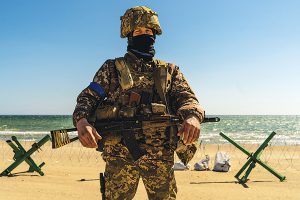The world has been transfixed by Ukraine’s fight for survival. As the war drags on, we’d better start considering what will become of Russia, as well. President Vladimir Putin’s nation has now been subjected to an isolation more sudden and total than that experienced by any major power in recent history. What that leads to may not be pretty.
Since late February, Russia has been hit with punishing economic, trade and financial sanctions. It is careering toward a debt default, as a rapid technological decoupling is also underway. Foreign firms are fleeing the country, while Russian teams are excluded from international competitions in soccer and other sports. Even the International Cat Federation has barred Russian felines from its events.
Russia isn’t some tinpot tyranny like Cuba or North Korea; it is a major power whose population was, until recently, deeply connected to its larger global environment. Now, Russia is suffering a degree of international ostracism that typically happens only when a country is at war with the world.
What will this mean for Moscow if its conflict with Ukraine drags on for months or years to come? We can imagine a few scenarios, all of which would pose nasty challenges for Russia, and some of which could be quite concerning for America and its allies.
The rosiest is a “Moscow Spring,†in which the costs of conflict lead to regime change and a rebirth of the democracy Russia experienced fleetingly in the 1990s. Russian elites push Putin aside and make peace with Ukraine. Having experienced the consequences of aggression and autocracy, the more urban, liberal swaths of Russian society demand a broader political opening and the country’s reintegration into the world. Just as isolation helped convince South Africa to ditch apartheid in the late 1980s, foreign opprobrium forces dramatic change in Moscow’s foreign and domestic policies.
The odds of this scenario materialising are slim. Two decades of Putinism have left Russia with a weak, fragmented opposition. The president has surely tried to coup-proof his regime by
co-opting the security and intelligence services and pitting them against one another. And even if Russia did experience a revolution, look out: The history of the 1990s cautions us that instability and even chaos could follow.
A second, more plausible scenario is “Wounded Giant.†Here, Putin uses his control of the security services to hang onto power and repress whatever popular discontent isolation produces. He exploits the black-market opportunities that sanctions inevitably create to compensate loyal cronies. Russia becomes more dependent on China as it seeks economic and technological alternatives to the West.
What changes is not so much Russian policies but Russian power: The cost of slogging ahead is continued attrition of the economy, retarded technological modernisation and a long-term weakening of Moscow’s military potential. This scenario isn’t great for the Western and Pacific democracies, but it isn’t terrible, either: Against a more sluggish, stagnating Russia, the US could fare well enough in a protracted rivalry.
There is a third, darker scenario: “Tehran on the Volga.†Here, isolation and radicalisation go hand in hand. Educated, upwardly mobile Russians leave the country, ridding the regime of its most outspoken liberal critics.
Hard-liners embrace a “resistance economy†premised on self-sufficiency and avoiding the contaminating influence of the West. Aggressive internal purges, relentless propaganda and the fanning of militant nationalism produce a Russian variant of fascism. When Putin eventually falls, he is replaced by an equally repressive, ambitious and xenophobic leader.
—Bloomberg
Hal Brands is a Bloomberg Opinion columnist, the Henry Kissinger Distinguished Professor at Johns Hopkins University’s School of Advanced International Studies, and a scholar at the American Enterprise Institute. Most recently, he is the author of “The Twilight Struggle: What the Cold War Teaches Us About Great-Power Rivalry Todayâ€
 The Gulf Time Newspaper One of the finest business newspapers in the UAE brought to you by our professional writers and editors.
The Gulf Time Newspaper One of the finest business newspapers in the UAE brought to you by our professional writers and editors.

